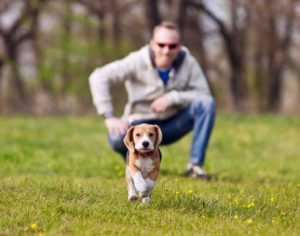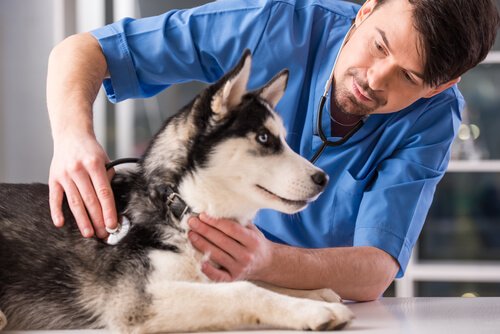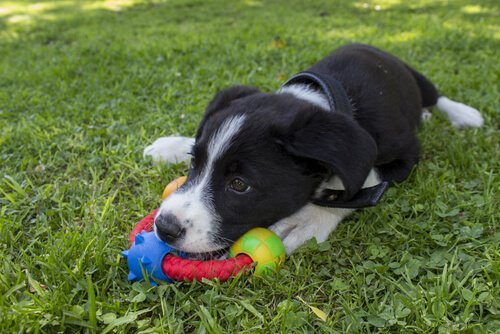How To Prevent Losing Your Dog On A Walk

When you’re taking your dog out for a walk, one of your worst fears is your dog is escaping and not being able to catch them. Most likely you fee the same way when you’re out on holiday or when you go hiking. In this article, you can read about what steps you can take to prevent losing your dog when out on a walk.
Prevent Losing Your Dog On A Walk
There are many things which can increase the risk of losing your dog, and, as an owner, you need to take steps to prevent it from happening. You must remember that animals can sometimes be a bit “irrational” and can get out of your site, regardless of how many precautions you’ve taken.
Here are a few tips that are great to prevent you from losing your dog while you are out for a walk:
1. Neutering
One of the main reasons that male dogs run away is because they’re after a female in heat. Their instinct is stronger than any number of years of domestication and training. They’ll run for miles if they ever get a chance to mate.

If you want to prevent losing your dog or prevent them from escaping, one good option is to neuter them. It’s a really simple procedure and completely changes your dog’s behavior. They’ll be much calmer, less aggressive, and more obedient when outside.
2. Teach them a call
Trainers suggest that this “command” or “call” should be taught when your dog is a puppy and should be used throughout their life. In order not to lose your dog, it’s essential that you don’t scold them when they run far away. Instead, you should praise your dog when they come back.
To begin with, call them by their name when it’s time to eat or during a walk. If they’re off the leash and running or playing happily, don’t call them just to have them back on the leash. If you do this, less likely your dog will come back next time because they’ll see it as a sign that the fun is over.
3. Take their toys or food with you
One excellent way to prevent losing your dog is to grab their attention with something they like. For example, if your dog takes off sprinting and doesn’t come back when you call them, then use some food (biscuits, dog food) or toys (their favorite one, especially if it makes noise).

This will make your dog want to come back. It also means they’ll be easier to find if they run out of your sight.
4. Put a tag on them
In many cities, it’s mandatory for dogs to be chipped, but no matter what, it’s really important to put a tag on their collar with their name and your telephone number on it. It won’t stop your dog from going missing, but it’s really useful when it comes to finding them.
5. Let them loose in small or enclosed areas
If you take your dog to a park, it’s better to take them to one that has an enclosed area to prevent dogs from escaping.

If you want to let your dog off the leash and play with them, it’s always best if you do it in a smaller area. Don’t play across the entire park. Try to stay limited to a specific area. This way you’ll reduce the chances of your dog going missing.
6. Create a strong bond with your dog
Your dog is your friend, so it’s really important to look after them at all times. If you manage to create a strong bond with your dog, there’ll be much less of a chance that they’ll run away.
Play, show them affection and pay attention to their needs. This is the best way to reduce the chances of your dog going missing. Visual communication is also really important. So, you should teach them to look at your eyes. That way, you’ll get their attention whenever you need it.
By following these tips, you’ll greatly reduce the risk of losing your dog when you take them out for a walk.
When you’re taking your dog out for a walk, one of your worst fears is your dog is escaping and not being able to catch them. Most likely you fee the same way when you’re out on holiday or when you go hiking. In this article, you can read about what steps you can take to prevent losing your dog when out on a walk.
Prevent Losing Your Dog On A Walk
There are many things which can increase the risk of losing your dog, and, as an owner, you need to take steps to prevent it from happening. You must remember that animals can sometimes be a bit “irrational” and can get out of your site, regardless of how many precautions you’ve taken.
Here are a few tips that are great to prevent you from losing your dog while you are out for a walk:
1. Neutering
One of the main reasons that male dogs run away is because they’re after a female in heat. Their instinct is stronger than any number of years of domestication and training. They’ll run for miles if they ever get a chance to mate.

If you want to prevent losing your dog or prevent them from escaping, one good option is to neuter them. It’s a really simple procedure and completely changes your dog’s behavior. They’ll be much calmer, less aggressive, and more obedient when outside.
2. Teach them a call
Trainers suggest that this “command” or “call” should be taught when your dog is a puppy and should be used throughout their life. In order not to lose your dog, it’s essential that you don’t scold them when they run far away. Instead, you should praise your dog when they come back.
To begin with, call them by their name when it’s time to eat or during a walk. If they’re off the leash and running or playing happily, don’t call them just to have them back on the leash. If you do this, less likely your dog will come back next time because they’ll see it as a sign that the fun is over.
3. Take their toys or food with you
One excellent way to prevent losing your dog is to grab their attention with something they like. For example, if your dog takes off sprinting and doesn’t come back when you call them, then use some food (biscuits, dog food) or toys (their favorite one, especially if it makes noise).

This will make your dog want to come back. It also means they’ll be easier to find if they run out of your sight.
4. Put a tag on them
In many cities, it’s mandatory for dogs to be chipped, but no matter what, it’s really important to put a tag on their collar with their name and your telephone number on it. It won’t stop your dog from going missing, but it’s really useful when it comes to finding them.
5. Let them loose in small or enclosed areas
If you take your dog to a park, it’s better to take them to one that has an enclosed area to prevent dogs from escaping.

If you want to let your dog off the leash and play with them, it’s always best if you do it in a smaller area. Don’t play across the entire park. Try to stay limited to a specific area. This way you’ll reduce the chances of your dog going missing.
6. Create a strong bond with your dog
Your dog is your friend, so it’s really important to look after them at all times. If you manage to create a strong bond with your dog, there’ll be much less of a chance that they’ll run away.
Play, show them affection and pay attention to their needs. This is the best way to reduce the chances of your dog going missing. Visual communication is also really important. So, you should teach them to look at your eyes. That way, you’ll get their attention whenever you need it.
By following these tips, you’ll greatly reduce the risk of losing your dog when you take them out for a walk.
All cited sources were thoroughly reviewed by our team to ensure their quality, reliability, currency, and validity. The bibliography of this article was considered reliable and of academic or scientific accuracy.
Milocco, S., & Dragonetti, A. (2014). Comportamiento normal y ontogenia de la conducta en caninos. Suplemento Tecnico Veterinario.
This text is provided for informational purposes only and does not replace consultation with a professional. If in doubt, consult your specialist.








